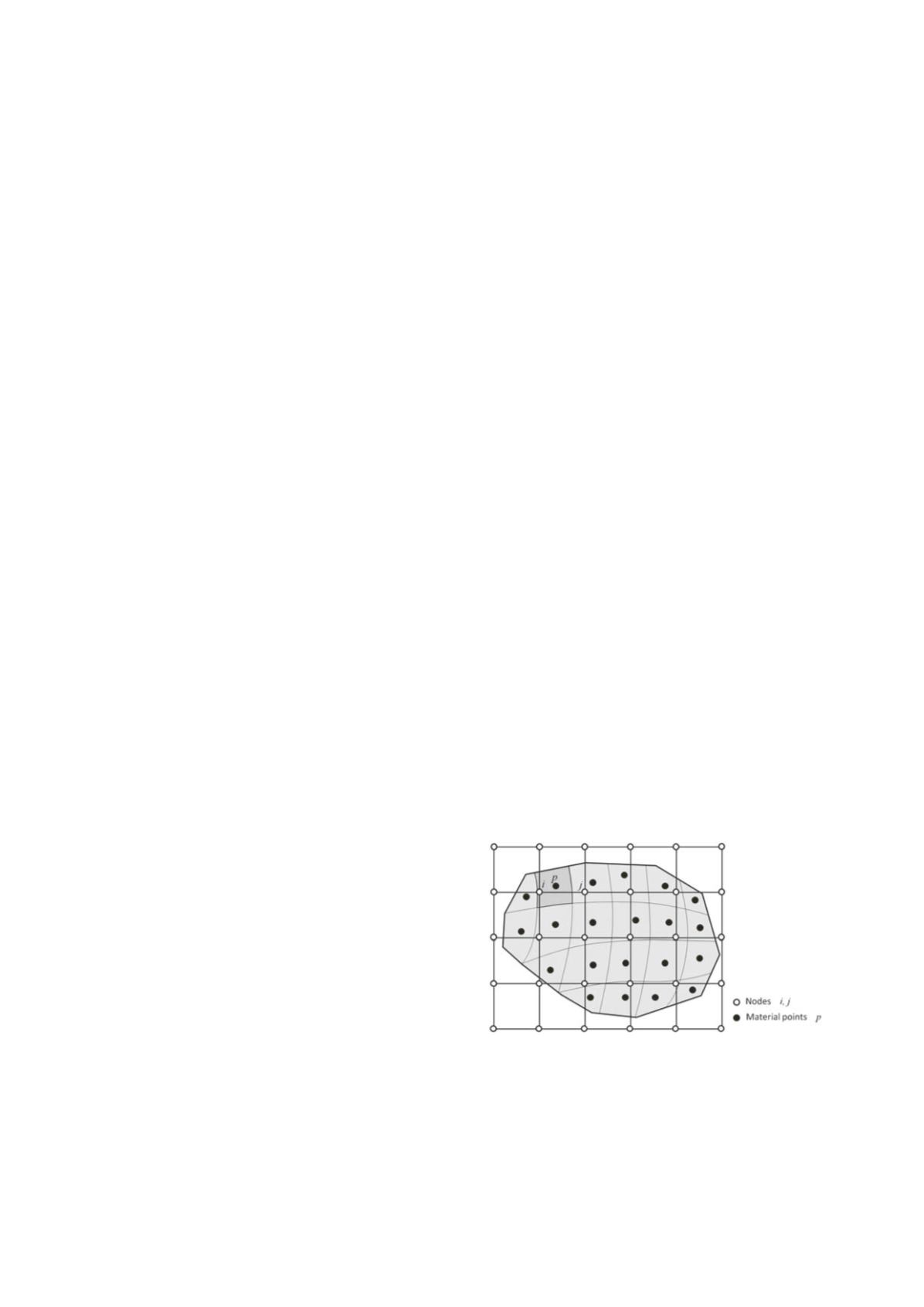
853
The Material Point Method: A promising computational tool in Geotechnics
La méthode du point matériel : un outil prometteur de calcul en géotechnique
Yerro A., Alonso E.
Department of Geotechnical Engineering and Geosciences, UPC, Barcelona, Spain
Pinyol N.
International Center for Numerical Methods in Engineering (CIMNE), UPC, Barcelona, Spain
ABSTRACT: In recent years, the Material Point Method (MPM) has been applied to a number of geotechnical problems and has been
extended to solve coupled flow-deformation problems. The dynamic formulation and the dual description of the media (lagrangian
material points and an eulerian numerical mesh) provide the MPM the capabilities of handling problems involving large
displacements and deformations. The paper presents four examples with the aim of highlighting the dynamic formulation and the
capability of the method to analyze in a unified mathematical framework the static-dynamic transition of a slope failure.
RÉSUMÉ: Ces dernières années, la Méthode du Point Matériel (MPM) a été appliqué à un certain nombre de problèmes
géotechniques et a été étendu à résoudre les problèmes couplés de flux-déformation. La formulation dynamique et la double
description du média (des points matériels lagrangiens et du maillage de calcul eulérien) fournissent au MPM la capacité à résoudre
des problèmes impliquant de grands déplacements et de grandes déformations. Le document présente quatre exemples afin d’illustrer
la nature dynamique de la formulation et la capacité de la méthode pour analyser la transition statique-dynamique d’une rupture d’un
talus avec un système de calcul unifié.
KEYWORDS: material point method, large deformations, slope failures, dynamics, consolidation.
1 INTRODUCTION
Problems involving large deformations such as the dynamic
evolution of landslides or problems involving history-dependent
constitutive models are of great interest in the geotechnical
field.
The capability of the material point method (MPM) to deal
with large displacements and its natural dynamic formulation
make this technique an important numerical tool to tackle a
number of geotechnical problems, such as landslides (Beuth
et
al.
, 2008), run-outs (Andersen & Andersen, 2009) or
installation of structures (pile driving and anchor pull-out
(Beuth
et al
, 2007).
In this paper two different features of the method are
illustrated in different examples. First, the dynamic nature of the
formulation is emphasized in two cases. Afterwards, the
capability of the method to analyze the static-dynamic transition
of a slope failure in a unified mathematical framework is
illustrated in two additional examples.
2 OUTLINE OF MPM FORMULATION
The MPM (Sulsky
et al.
1995) represents the material as a
collection of unconnected points so-called material points where
the mass is concentrated (see Fig.1). Then, the density of the
mixture can be expressed as
1
,
p
N
p
p
p
t
m
x
x x
(1)
in which
m
p
and
x
p
are the mass and the position of the p
th
material point, δ(
x
) is the Dirac delta function, and
N
p
is the
total number of material points. An important assumption is that
the mass assigned to each material point remains fixed during
the calculation, thus assuring mass conservation. Other
quantities such as velocities, strains and stresses, are also
carried by the material points. Otherwise the governing
equations are solved in a support numerical mesh, which covers
the full domain of the problem. The standard shape functions
provide the relationship between the material points and the
nodes of any point of the domain.
The MPM formulation for a mechanical problem was
presented by Sulsky
et al.
(1995). They discretized the equation
of dynamic momentum balance. MPM has also been extended
to solve coupled hydro-mechanical problems in granular media
based on the well known equations described in Zienkiewicz &
Shiomi (1984) and Verruijt (2010). Two different formulations
have been applied, the most common one based on the solid
velocity-liquid pressure formulation (Zabala & Alonso, 2011),
and a solid velocity-liquid velocity formulation (Jassim
et al.
2012).
Figure 1. Discretization in material points and a finite element
mesh used in MPM.


